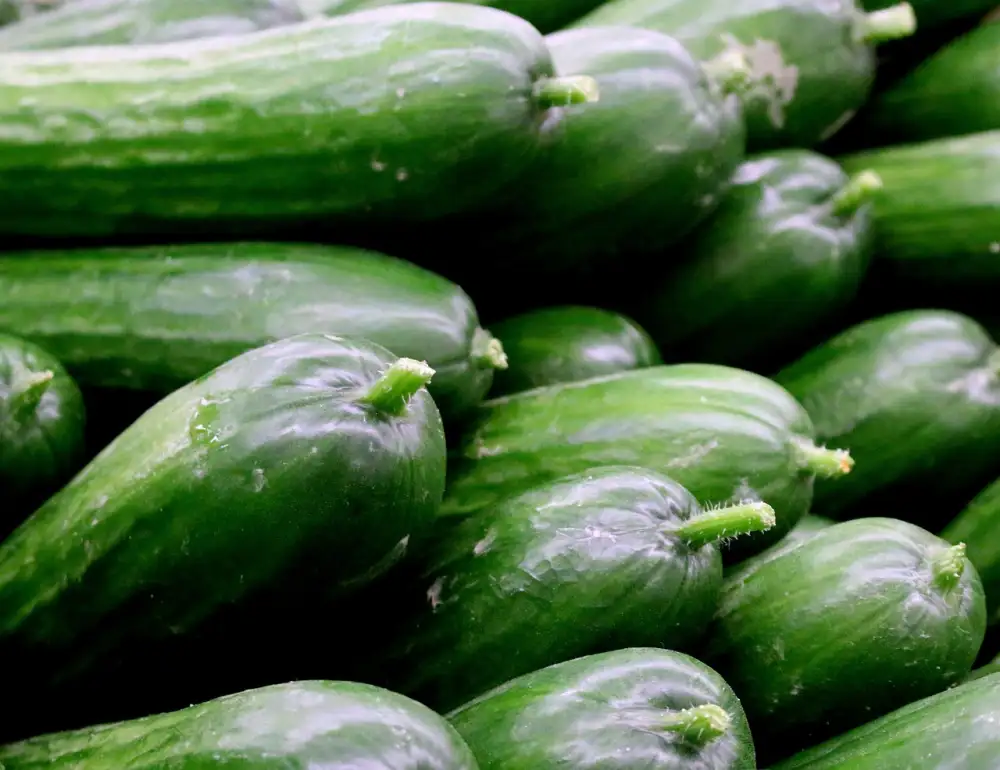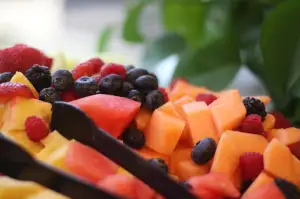Discover the Delights of Persian Cucumbers: A Refreshing Twist in the World of Cucumbers!

When it comes to cucumbers, most people are familiar with the common varieties found in supermarkets. However, there is a lesser-known cucumber that is making waves in the culinary world - the Persian cucumber. With its unique flavor and crisp texture, Persian cucumbers offer a refreshing twist to traditional cucumber dishes. In this article, we will delve into the origins, physical characteristics, nutritional value, culinary uses, and growing tips of these delightful cucumbers. Get ready to discover the wonders of Persian cucumbers and elevate your culinary experience!
Origins and History of Persian Cucumbers
Persian cucumbers, also known as mini cucumbers or baby cucumbers, have a rich history that dates back thousands of years. These cucumbers are believed to have originated in the Middle East, specifically in Iran (formerly known as Persia), hence their name. They have been cultivated and enjoyed by Persian people for centuries.
Persian cucumbers were introduced to other parts of the world through trade routes and exploration. They made their way to Europe during the Roman Empire and eventually reached North America in the 16th century.
These cucumbers gained popularity due to their unique flavor and crisp texture. They were highly valued for their refreshing taste and versatility in various culinary preparations. Over time, they became a staple ingredient in Middle Eastern cuisine, particularly in salads, pickles, and yogurt-based dishes.
Today, Persian cucumbers are widely cultivated and enjoyed around the world. Their popularity has grown not only because of their delicious taste but also because of their numerous health benefits. Let's explore more about these delightful cucumbers!
Physical Characteristics and Appearance
Persian cucumbers are known for their unique physical characteristics and appearance. They are smaller in size compared to other types of cucumbers, typically measuring around 6-8 inches in length. Their slender shape sets them apart, with a diameter of only 1-2 inches. The skin of Persian cucumbers is thin and smooth, ranging in color from dark green to a vibrant shade of yellow-green. Unlike other cucumbers, they have minimal to no ridges or bumps on their surface, giving them a sleek and polished look. The flesh of Persian cucumbers is crisp and juicy, with a refreshing crunch that adds to their appeal. Overall, their petite size and flawless appearance make them an attractive addition to any dish or salad presentation.
Nutritional Value and Health Benefits
Persian cucumbers are not only delicious but also packed with essential nutrients. These crisp and refreshing cucumbers are low in calories, making them a perfect addition to any diet. They contain high levels of vitamins A, C, and K, which are important for maintaining healthy skin, boosting the immune system, and promoting blood clotting.
Moreover, Persian cucumbers are an excellent source of hydration due to their high water content. This makes them a great choice for staying hydrated during hot summer months or after a workout. Additionally, they are rich in fiber, aiding digestion and promoting bowel regularity.
These cucumbers also boast a range of antioxidants such as beta-carotene and flavonoids that help reduce inflammation in the body and protect against chronic diseases like heart disease and certain types of cancer.
Incorporating Persian cucumbers into your diet can have numerous health benefits. Whether enjoyed in salads, sandwiches, or as a snack on their own, these cucumbers provide a refreshing twist while nourishing your body with vital nutrients.
Culinary Uses and Recipes with Persian Cucumbers
Persian cucumbers are incredibly versatile in the kitchen, making them a favorite among chefs and home cooks alike. Their crisp texture and mild flavor make them perfect for salads, sandwiches, and even pickling.
One popular recipe is a refreshing cucumber salad. Simply slice the Persian cucumbers thinly and toss them with some lemon juice, olive oil, salt, and pepper. Add some chopped fresh herbs like dill or mint for an extra burst of flavor.
Another delicious option is to use Persian cucumbers in a tzatziki sauce. Grate the cucumbers and mix them with Greek yogurt, minced garlic, lemon juice, and a pinch of salt. This creamy dip pairs well with grilled meats or can be used as a refreshing spread on sandwiches.
For those who enjoy pickles, try making quick pickled Persian cucumbers. Slice the cucumbers into rounds or spears and place them in a jar with vinegar, water, sugar, salt, and spices like dill seeds or mustard seeds. Let them sit in the fridge for a few hours or overnight for tangy homemade pickles.
The possibilities are endless when it comes to using Persian cucumbers in your culinary creations. Their delicate flavor adds a refreshing twist to any dish while their crunchy texture provides a satisfying bite. So go ahead and experiment with these delightful cucumbers in your next meal!
Growing and Harvesting Persian Cucumbers
Persian cucumbers are relatively easy to grow, making them a popular choice for home gardeners. They thrive in warm climates and require full sun exposure. It is best to sow the seeds directly into well-drained soil after the last frost date. The soil should be enriched with organic matter and kept consistently moist.
When it comes to harvesting, Persian cucumbers are typically ready to be picked within 50-60 days after planting. The cucumbers should be harvested when they reach a length of around 4-6 inches, as this is when they are at their peak flavor and texture. It's important to check the plants regularly and harvest the cucumbers promptly to encourage continuous production.
To harvest the cucumbers, gently twist or cut them off from the vine using a sharp knife or pruning shears. Be careful not to damage the plant while harvesting. It's advisable to wear gloves while handling the prickly vines.
Regularly harvesting ripe cucumbers will also help promote further growth and prevent overripening, which can lead to bitter-tasting cucumbers. Enjoy the satisfaction of growing your own Persian cucumbers and relish their crispness and refreshing taste straight from your garden!
Tips for Selecting and Storing Persian Cucumbers
When selecting Persian cucumbers, look for ones that are firm and have a vibrant green color. Avoid cucumbers that are soft or have wrinkled skin, as these may be overripe. It's also important to choose cucumbers that are straight and free from any blemishes or bruises.
To store Persian cucumbers, place them in a plastic bag and keep them in the refrigerator. They can stay fresh for up to a week when stored properly. However, it's best to consume them within a few days of purchasing for optimal taste and texture.
If you have excess Persian cucumbers, consider pickling them to extend their shelf life. Simply slice the cucumbers and place them in a jar with vinegar, water, salt, sugar, and your choice of spices. Let the cucumbers marinate in the brine for at least 24 hours before enjoying their tangy flavor.
Remember to wash Persian cucumbers thoroughly before consuming or using them in recipes to remove any dirt or residue. With these tips in mind, you'll be able to select and store Persian cucumbers like a pro!
Comparison to Other Types of Cucumbers
When it comes to cucumbers, there are many different varieties to choose from. However, Persian cucumbers stand out for their unique qualities. In comparison to other types of cucumbers, Persian cucumbers are smaller in size, typically measuring around 6-8 inches long. This makes them perfect for snacking or adding to salads without the need for peeling or seeding.
Unlike traditional cucumbers, Persian cucumbers have a thin skin that is tender and easy to digest. This means you can enjoy the whole cucumber without any bitterness or tough texture. Additionally, their flesh is crisp and crunchy, providing a refreshing bite with every bite.
In terms of flavor, Persian cucumbers are known for their mild and slightly sweet taste. They have a subtle cucumber flavor that is not overpowering, making them versatile in various culinary dishes. Whether you're making a Greek salad, tzatziki sauce, or simply enjoying them on their own, Persian cucumbers add a delightful crunch and refreshing taste.
Another advantage of Persian cucumbers is their seedless nature. Unlike some other cucumber varieties that can be filled with large seeds, Persian cucumbers have small and tender seeds that are barely noticeable when eaten. This makes them even more enjoyable as you don't have to worry about removing the seeds before using them in your recipes.
Overall, while other types of cucumbers certainly have their merits, Persian cucumbers offer a unique combination of size, texture, flavor, and convenience. Their smaller size and thin skin make them easy to prepare and enjoy without any fuss. So if you're looking to add a refreshing twist to your culinary creations or simply want a healthy snack option, exploring the delights of Persian cucumbers is definitely worth it!
In conclusion, Persian cucumbers are a delightful addition to the world of cucumbers. With their crisp texture, mild flavor, and numerous health benefits, they are a refreshing twist that is worth exploring. Whether you enjoy them in salads, sandwiches, or as a snack on their own, Persian cucumbers offer a unique culinary experience. Their versatility in the kitchen and ease of growing make them an excellent choice for both home cooks and professional chefs. So why not give Persian cucumbers a try and discover the wonders they can bring to your meals?
Published: 22. 11. 2023
Category: Food



